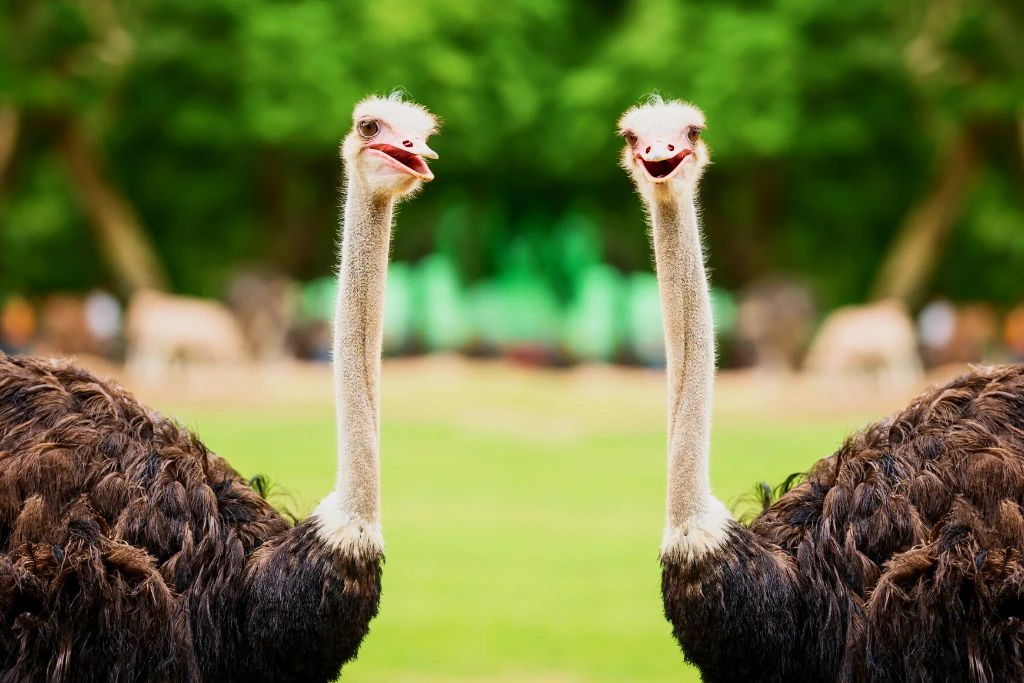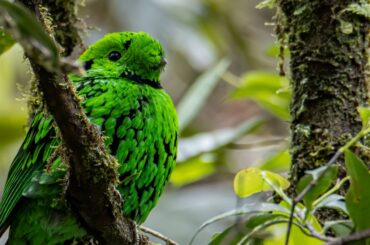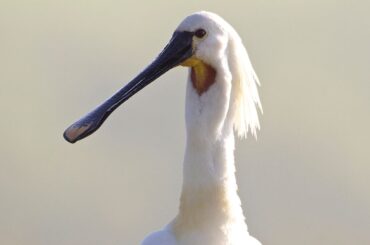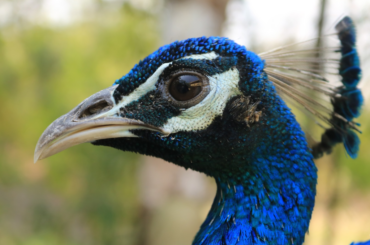Ostriches can reach up to 43 mph. They can cover sixteen feet in a single stride. Ostriches can also travel long distances at 37 mph. They can run a 26-mile Olympic marathon in less than 40 minutes.
Aside from their world-record size, weight, and speed, ostriches have the largest eyes of any bird and can spot large predators, such as lions and hyenas, from 2 miles away. Their eyes are larger than their brains, with a diameter of 5cm.
How Fast Can an Ostrich Run in Mph?

Ostriches are one of the world’s most distinctive birds, with long elongated necks and large round bodies. Ostriches are Africa’s largest flightless bird, standing over 8 feet in length and weighing over 220 lbs.
Ostrich Running Speed
The fastest ostrich can reach speeds of up to 43 mph. That’s a lot of speed! Ostriches cannot only sprint at that speed, but they can also run for a long time.
Ostriches can sustain 31 mph over long distances. The ostrich’s top speed of both living species is the same.
Ostrich Top Speed
How fast can an ostrich run, and how did they learn to run despite their enormous size and weight?
Ostriches can sprint at speeds ranging from 40 to 45 miles per hour and cover a massive 16 feet in a single stride. They have been recognized to reach speeds of 60 mph in short bursts, making them the fastest two-legged terrestrial animal on the planet.
Ostriches can also run for up to half an hour at speeds ranging from 30 to 38 miles per hour. That means they can complete a 26-mile marathon in 35 to 40 minutes.
Is an Ostrich the Fastest-Running Bird?
There are only two ostrich species in the world – the common ostrich and the Somali ostrich. The largest is the common ostrich, but Somali ostriches are not far behind.
Neither species of an ostrich can easily surpass 40 mph running speeds and cover 16 feet in a single stride. Over short distances, some ostriches have been assessed to reach speeds of up to 60 mph, making the ostrich the world’s fastest-running bird and the fastest two-legged land animal.
Where Can You Find Ostriches in the Wild?
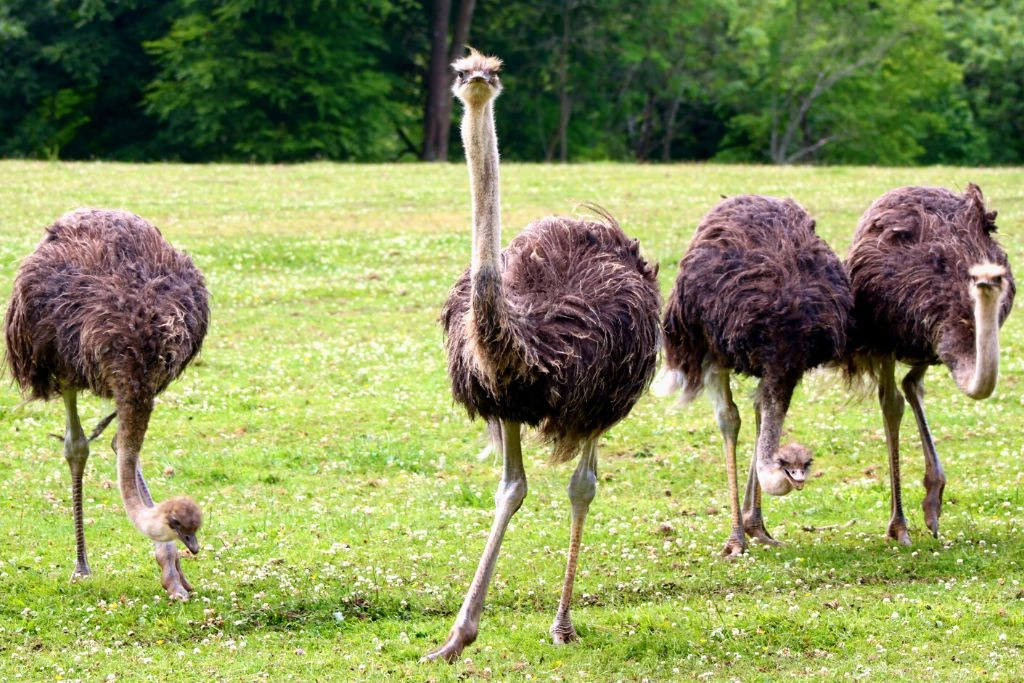
Both types of the ostrich are found in Africa; more commonly south of the Sahara Desert and in Eastern and Southern Africa. Somalia, Ethiopia, Djibouti, and Kenya are home to the Somali ostrich. Ostriches can survive in dry, sandy environments and prefer shrublands, grasslands, and savannas.
Ostriches that were set to release from farms survived to form free-roaming inhabitants in Australia, but these birds are not indigenous to the continent.
How Far Can an Ostrich Run in a Single Day?
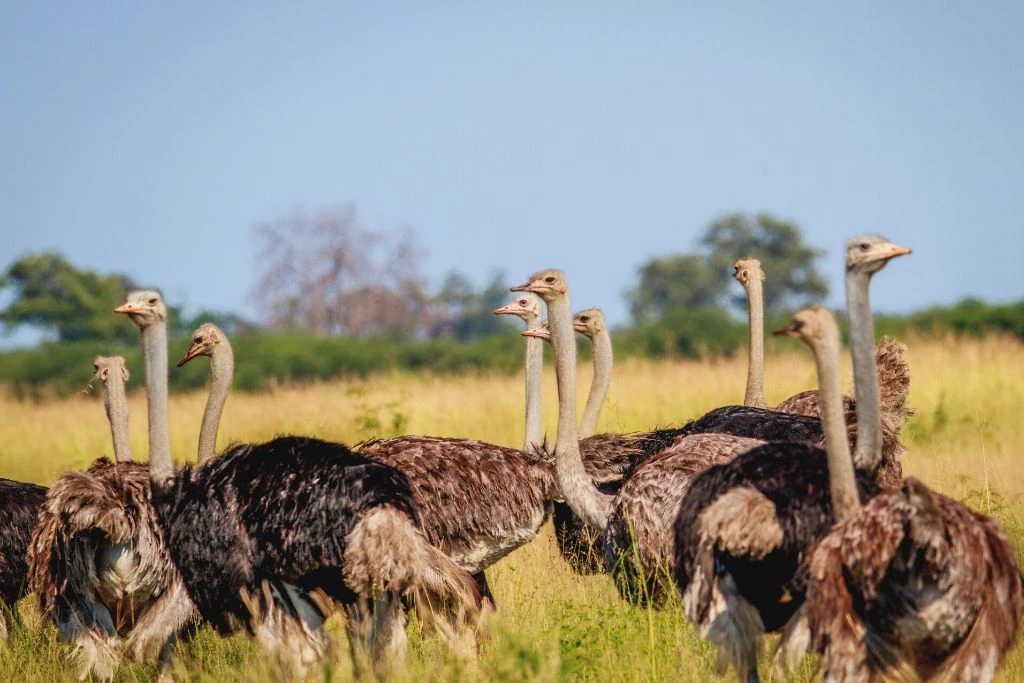
Predicting how far an ostrich can run in a day is difficult. While humans know that ostriches are excellent long-distance runners, there are a few scenarios in which humans can determine how far they can travel before reaching their limits.
If an ostrich can run 30 miles per hour for an hour, it can cover 180 miles in a 12-hour day with one hour of rest between each 1-hour running period. Ostriches don’t run for the sake of running, but rather to avoid danger or find water and food.
Why Do Ostriches Run So Fast?
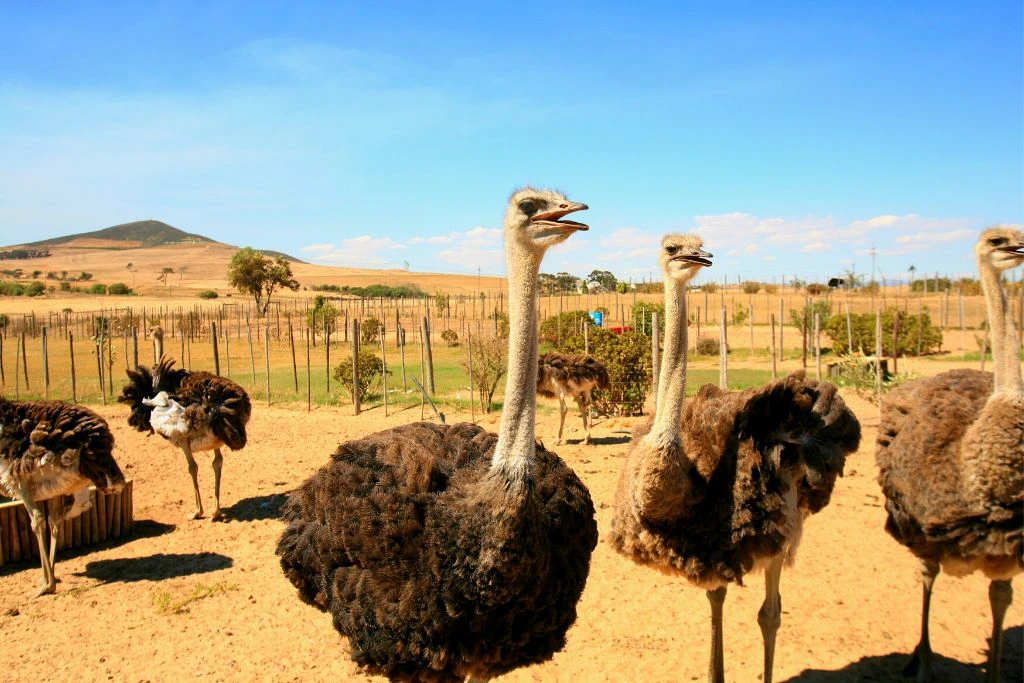
You now have an idea of how fast an ostrich can run, but why do ostriches run so fast? The two main reasons why ostriches need to run are similar to those of most other creatures – to escape from predators and find fresh grazing pastures.
Escaping Predators
At 43 miles per hour, that top ostrich run speed is similar to that of many African antelope, as demonstrated by this list of Africa’s fastest antelope.
43 mph is similar to the speed of some ostrich predators, suggesting that origin and evolution are also perfectly balanced. To avoid their predators, ostriches run quickly. They had to seek a way to escape since they can’t fly. They can also cover long distances to keep out hungry hyenas.
Hyenas and wild dogs hunt their prey over vast distances, exhausting them. Even hyenas and wild dogs cannot match the ostrich’s incredible endurance and speed.
Fresh Grazing Pastures

Ostriches have evolved to live in arid environments. They must travel long distances to find food. Ostriches can also run fast to find new grazing pastures. It’s incredible to see an ostrich run.
One of the highlights of an African safari is tracking an ostrich over a long distance. The safari vehicle frequently cannot keep up with the ostriches as they run, and run, and run.
How Does the Ostrich Run So Fast?
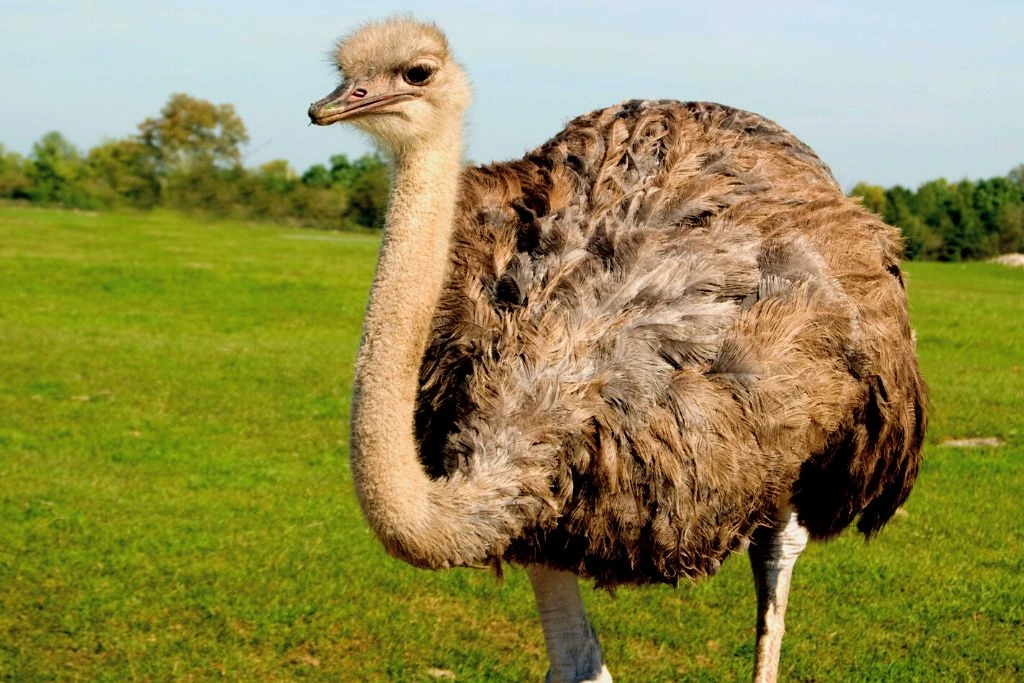
Ostriches have three anatomical features that aid in their incredible speed and stamina:
Their massive, elastic legs are paired with bulky, well-developed top muscles. Both feet leave the ground simultaneously, and their light legs bounce across the African savannah. Ostriches have enormous legs ranging from 40 to 55 cm.
Because of their large, lengthy, and powerful tendons, their legs contain twice the elasticity of human legs. Large, well-developed leg muscles power ostrich legs, allowing the entire length of the leg to swing forward and back at high speeds.
Longer legs translate to a longer stride, and ostriches have the longest legs of any flightless bird. All of the muscles in their legs are close to the body.
Compared to humans, ostriches have extremely powerful upper thighs and posterior muscles, but tiny calf muscles. Since their leg muscles are relatively close to their bodies, ostriches can swing their legs much more quickly than most other animals. These muscles provide power, while their long, light legs provide distance.
Their Ideal Center of Gravity
Ostriches do not appear to be in peak running condition. They can keep all their major organs secure and safe under their wings while running on their long legs. Ostriches have large, round, balanced bodies that enable them to keep stable despite their great height.
Ostriches are perfectly proportioned because their center of gravity is positioned between their long legs and wings. Regardless of how fast they run or how out of regulation they seem, they are always relatively well-balanced.
Ostriches are also extremely efficient. Since their center of gravity keeps them perfectly balanced, they can move forward with all of their muscular strength. That is why an ostrich could run at 37 mph for a long distance. Ostrich’s center of gravity is optimal for running.
While sprinting, their wings stabilize and direct them.
Ostriches do not fly, though they do have wings. The speed of an ostrich is determined by its wings. Ostriches travel and balance themselves at high speeds using their wings, which can span more than 6 feet.
Subtle wing movements, similar to those of an airplane, help an ostrich preserve its balance when traveling at high speeds.
Humans will eventually lose their tailbone – it is a natural process – but ostriches will not lose their wings because they can only run fast in a straight line without them.
Is It Possible for a Human To Outrun an Ostrich?
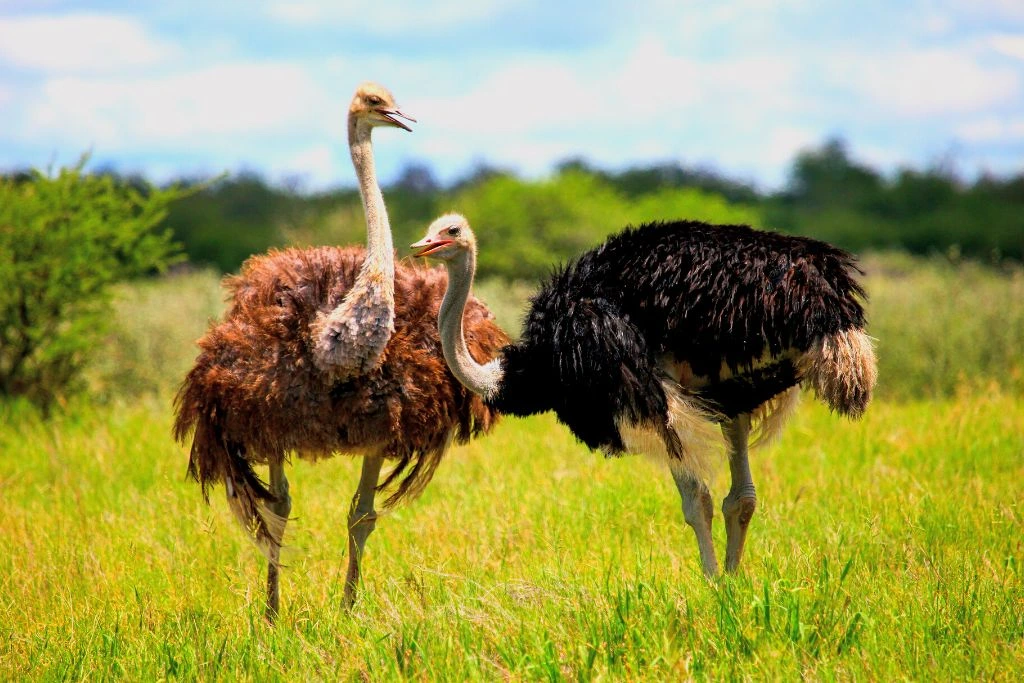
No. A human would never be able to outrun an ostrich. Ostriches can run twice as fast as the average human.
Their top speed of 45 mph is well above the human sprint world record of around 27 mph. No human, past or present, could outrun an ostrich over a short distance, let alone a long one.
Conclusion
Although ostriches cannot fly, no other bird can contest their speed on land. Ostriches are the world’s fastest-running birds. Scientists have observed ostriches running continuously at 30-37 mph and sprinting up to 43 mph.
Ostriches can stretch more than 16 feet in a single stride due to their long, strong legs. Their feet act like springs, cushioning and absorbing shock as they propel forward. The ostrich’s speed and anatomy are so distinct that scientists have created mechanical robot feet based on the bird.

